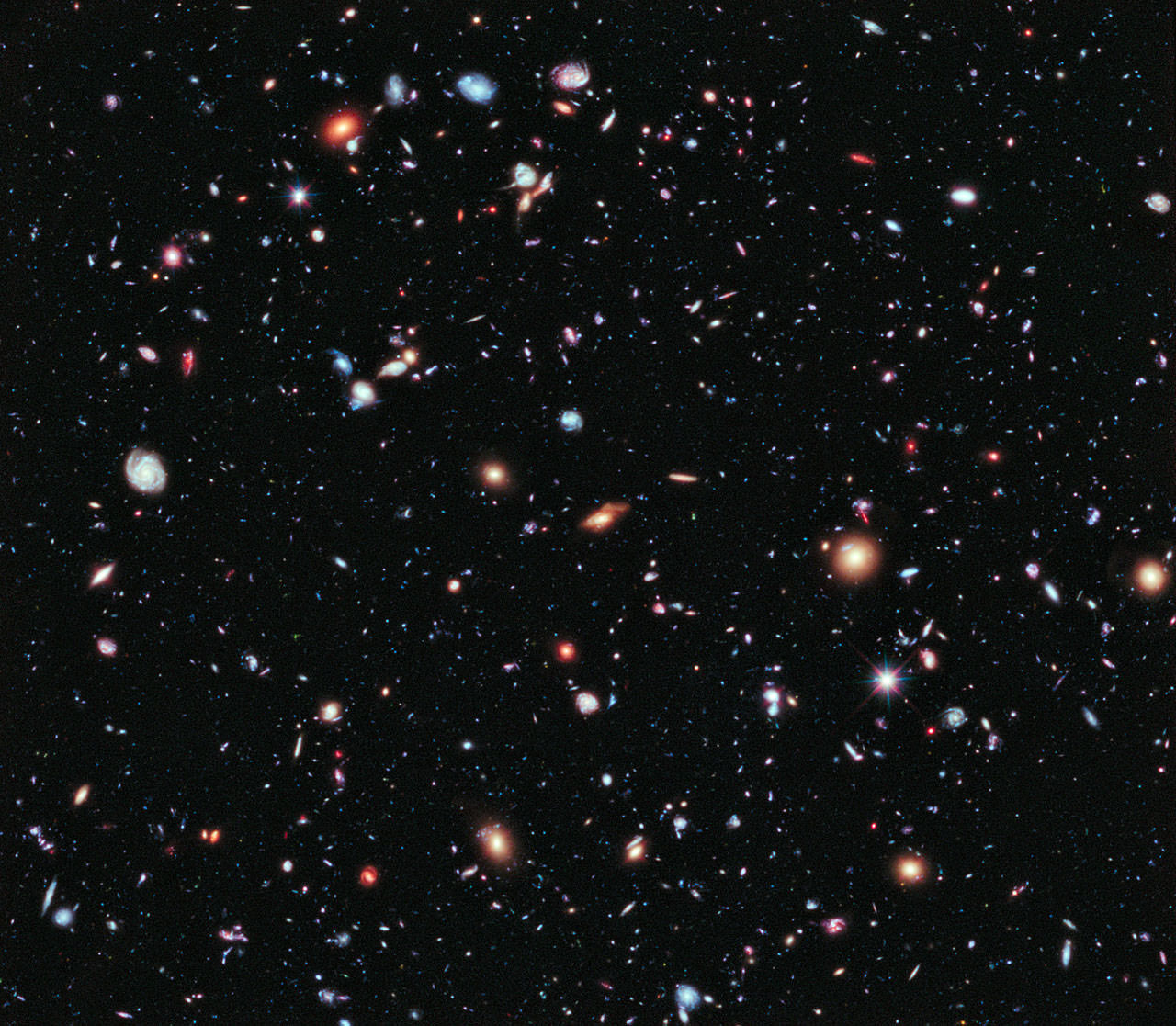The Hubble eXtreme Deep Field (XDF) combines Hubble observations taken over the past decade of a small patch of sky in the constellation of Fornax. With a total of over two million seconds of exposure time, it is the deepest image of the Universe ever made. Credit: credit: NASA, ESA, G. Illingworth, D. Magee, and P. Oesch (University of California, Santa Cruz), R. Bouwens (Leiden University), and the HUDF09 Team
Oh my! The Hubble Space Telescope has just outdone itself, taking the deepest-ever view of the Universe. But the new image really is a compilation of work over the past ten years, as the eXtreme Deep Field, or XDF was assembled by combining ten years of observations, with over 2 million seconds of exposure time, taken of a patch of sky in the center of the original Hubble Ultra Deep Field from 2004. The XDF is a small fraction of the angular diameter of the full Moon.
The new full-color XDF image is even more sensitive than the Hubble Ultra Deep Field image from 2004 and the original Hubble Deep Field image from 1995. The new XDF image contains about 5,500 galaxies, even within its smaller field of view. The faintest galaxies are one ten-billionth the brightness that the unaided human eye can see.
“The XDF is the deepest image of the sky ever obtained and reveals the faintest and most distant galaxies ever seen. XDF allows us to explore further back in time than ever before,” said Garth Illingworth of the University of California at Santa Cruz, principal investigator of the Hubble Ultra Deep Field 2009 (HUDF09) program.
o see a world in a grain of sand,
And a heaven in a wild flower,
Hold infinity in the palm of your hand,
And eternity in an hour. — William Blake
Just take a look: magnificent spiral galaxies similar in shape to the Milky Way and Andromeda galaxies, as well as large, fuzzy red and dead galaxies that are no longer producing stars. Peppered across the field are tiny, faint, and yet more distant galaxies that are like the seedlings from which today’s magnificent galaxies grew. The history of galaxies — from soon after the first galaxies were born to the great galaxies of today, like the Milky Way — is laid out in this one remarkable image.
Here’s an animation that zooms in and flies through the XDF:
Hubble was pointed at a tiny patch of southern sky in repeat visits made over the past decade with more than 2,000 images of the same field taken with Hubble’s two primary cameras: the Advanced Camera for Surveys and the Wide Field Camera 3, which extends Hubble’s vision into near-infrared light. These were then combined to form the XDF.
The Universe is 13.7 billion years old, and incredibly, the XDF reveals galaxies that span back 13.2 billion years in time. Most of the galaxies in the XDF are seen when they were young, small, and growing, often violently as they collided and merged together.
Astronomers are already planning to outdo this image. They are planning to aim the James Webb Space Telescope (at the XDF, and will study it with its infrared vision. The Webb telescope will find even fainter galaxies that existed when the Universe was just a few hundred million years old. Because of the expansion of the Universe, light from the distant past is stretched into longer, infrared wavelengths. The Webb telescope’s infrared vision is ideally suited to push the XDF even deeper, into a time when the first stars and galaxies formed and filled the early “dark ages” of the Universe with light.
Want to know more about this image? The Hubble team is having a Google Event webinar to discuss the latest findings – the public can show up online and ask questions of the astronomers involved. It’s at 1 p.m. EDT on Sept. 27, and can be joined either at HubbleSite’s Google Plus page or the HubbleSite YouTube Channel.
Source: ESA Hubble


That’s so c00000l
Absolutely amazing. That’s nearly a month of exposure time. It’s the closest thing we have to a time machine.
That poem you quoted was written by William Blake not Robert Blake. Robert Blake was a below average actor who was accused of murder, certainly not the writer of those words you attribute to him!
but wait! Did you see Robert Blake in David Lynch’s “Lost Highway”? He was brilliantly scary.
Next thing you know, they’ll attribute a Lord Alfred Tennyson passage to “Mr. T”
Amazing! THAT the image above is from a teensy weensy, itsey bitsey section of the sky!